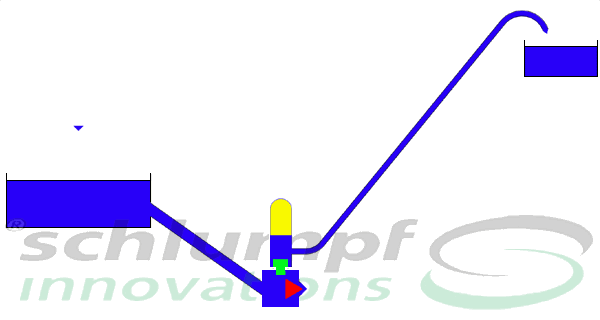A Hydraulic Ram is a water pump that takes advantage of a gradient (static pressure) to multiply pressure without using any external energy.
As an example, if one wished to pump water to a house located 100 meter above than the source, a hydraulic ram could be installed at a lower elevation than the source. So, the pressure gained by force of gravity and the difference in elevation between source and ram will cause the ram to pump the water up to the house without requiring any other source of power.

Mechanically, a hydraulic ram boils down to two valves: the waste valve (also known as the “clack” valve) and the delivery check valve.
At the beginning, the waste valve (red) is open, and water flows from the source through the drive pipe into the ram, and leaves through the waste valve.
Water flows with increasing speed and kinetic energy until the increasing drag force closes the waste valve, and this raises the pressure in the drive pipe. The amount of static pressure can be from five to one hundred times higher.
This pressurized water passes through the delivery valve into the pressure vessel, which is connected to the delivery pipe.
When the pressure equalizes, the delivery check valve closes and the waste valve reopens, and the next operating cycle begins.
A part of the water of the source is used for driving the ram and (very important) it will flow off from the site of the ram. So, hydraulic rams cannot be installed in basements!